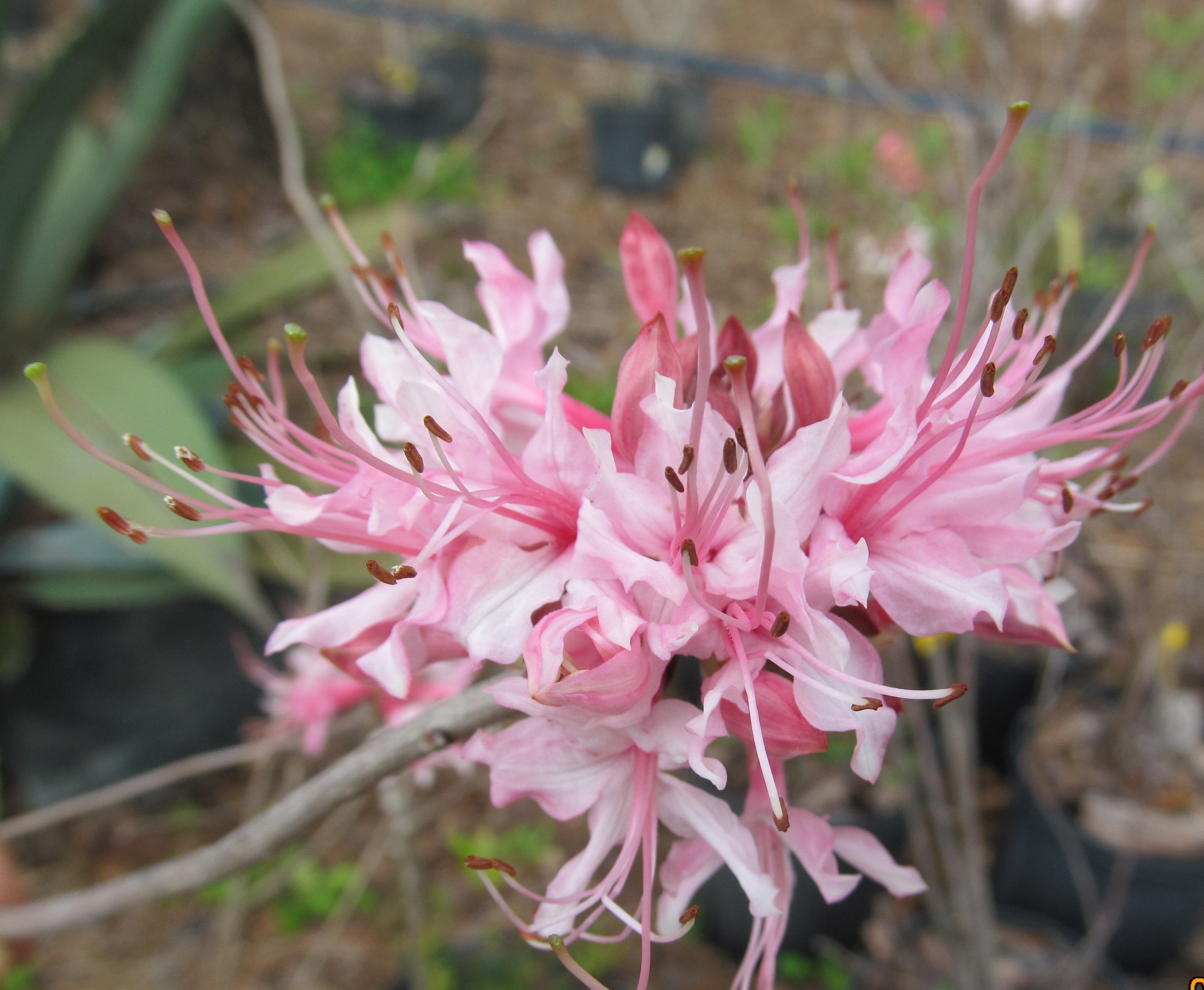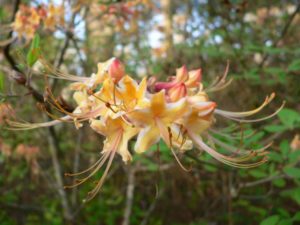NATIVE AZALEAS – SPRING IS BLOOMING

Are you tired of looking at brown grass and leafless trees? Spark up the dreary end of winter with the cheer of early spring blooming native azaleas. Native azaleas, also called wild honeysuckle, are among the most popular early bloomers in the nursery. These lovely members of the Rhododendron genus offer delicate blossoms in a variety of colors and many offer lightly fragrant blossoms. They bloom from February into early April. Many varieties flower before the foliage emerges. Â Â
Native azaleas do best in bright shade or under the high, shifting shade of pines. Hot afternoon sun is not recommended but morning sun, good mulch and adequate moisture will work well. Annual layers of pine needle or leaf mulch help to retain acidity

and moisture, and create organic content in the soil. These shrubs grow in relaxed, irregular patterns to five or six feet high and four or five feet wide, offering a gentle embrace of spring as it passes by.
Try one or two as specimen plants in a formal landscape, or as an understory in a bright or partly shaded area. Collect different species to extend the period of blooms, to add different colors and to attract more pollinators.
As with any planting, native azaleas require careful watering for the first year and

monitoring until well established. The small root ball should be loosened or scored. Peat moss or compost can be added to the backfill. The plant should be placed no deeper than the existing soil line in the container and it should be thoroughly watered. Water should be provided every two days for a week, then every three or four days for several weeks, and finally once or twice a week for up to a year. Monitor to avoid stress during droughts. Â

Azalea/camellia fertilizer can be lightly applied. Azaleas require slightly acidic soils so avoid planting too near to concrete unless the ph is corrected. Their shallow roots will benefit from pine straw or leaf mulch. Prune only if necessary and only right after blooming.
Now, relax and anticipate the pretty perennial spring flowers of the native azalea.

